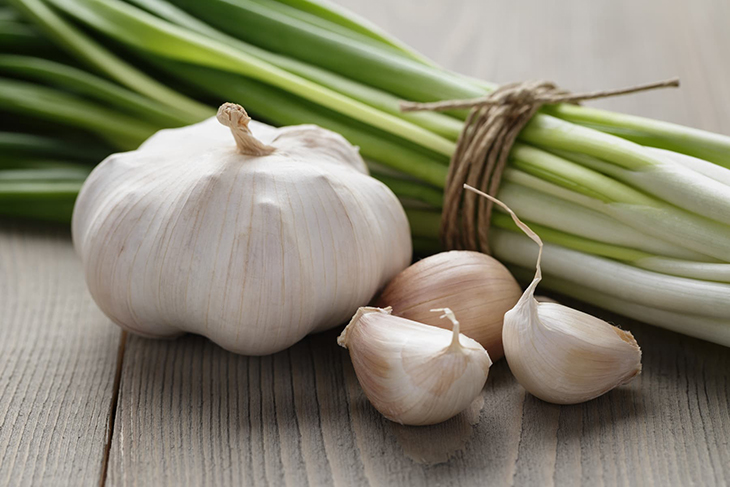Food Choices Packed With Health-Boosting Prebiotics You Need To Include In Your Daily Diet

If you’re aiming to follow a diet that promotes a healthy gut microbiome, identifying foods rich in the right microorganisms and nutrients (probiotics and prebiotics) in the recommended quantities can be challenging.
The good news is that recent research presented at Nutrition 2023, the annual meeting of the American Society of Nutrition, has done much of the groundwork by uncovering foods with significant prebiotic content.
After analyzing the prebiotic levels in numerous foods, researchers identified the ones that are particularly abundant in prebiotics:
- Dandelion greens
- Jerusalem artichokes (also known as sunchokes)
- Garlic
- Leeks
- Onions
As a bonus, these prebiotic-rich foods not only support gut health but also provide substantial fiber content. According to the U.S. Food and Drug Administration (FDA), high-fiber foods have been proven to promote bowel health, regulate your digestive system, and create a lasting sense of fullness.
“Eating prebiotic-dense foods has been indicated by previous research to benefit health,” said a coauthor of the study, Cassandra Boyd, in a press release. She is a master’s student at San José State University in California. “Eating in a way to promote microbiome wellness while eating more fiber may be more attainable and accessible than you think,” she also said.
Prebiotics and Probiotics: What These Are and Why These are Important
Prebiotics are occasionally confused with dietary fibers; however, it’s important to note that only a specific subset of dietary fibers meets the criteria for being classified as prebiotics, as defined by the International Scientific Association for Probiotics and Prebiotics (ISAPP).
“Prebiotics are a type of dietary fiber that we, the host, cannot digest, but select microbes of the gut microbiota can,” Gail Cresci, PhD, RD, explained. She is a microbiome researcher with Cleveland Clinic Children’s in Ohio.
This indicates that prebiotics bypass digestion and travel to the colon, where specific members of the gut microbiota can break them down. Consequently, prebiotics assist in maintaining an ideal gut microbiota composition, generating metabolites with health advantages, as stated by Dr. Cresci.
It’s crucial to differentiate prebiotics from probiotics, live microorganisms present in fermented foods like cultured milk, yogurt, tempeh, miso, sauerkraut, and brine drinks. Probiotics enhance microbiome diversity, according to the National Institutes of Health.
To simplify, prebiotics act as nourishment for the microbiome, while probiotics consist of live microorganisms. Although both can potentially enhance microbiome health, they operate through distinct mechanisms.
About Jerusalem Artichoke – A.K.A. a Sunchoke
The Jerusalem artichoke, scientifically known as Helianthus tuberosus, is misleadingly named, as it has no ties to Jerusalem and is not a type of artichoke, as per the University of Michigan. This plant is actually related to sunflowers. Its edible tuber, often called a sunchoke, is a gnarled root vegetable resembling ginger and has a flavor reminiscent of a sweet and nutty potato.
A Healthy and Diverse Microbiome Promotes Overall Health Could Reduce the Risk of Obesity and Suffering from Chronic Diseases
“We are still learning, but current evidence suggests that the gut microbiome supports overall health and well-being through its role in digestion, production of beneficial metabolites, supporting immunity, pathogen exclusion, and maintaining gut barrier function,” said Cresci when she made a reference to a review published in Signal Transduction and Targeted Therapy in April 2022.
A study published in the March 2022 issue of Biomedicine & Pharmacotherapy suggests that there is evidence linking reduced microbiome diversity to obesity and related conditions like type 2 diabetes.
Foods with the Most Prebiotics
In this study, researchers utilized existing scientific research to assess the prebiotic content in over 8,000 foods listed in the Food and Nutrient Database for Dietary Studies, a widely used resource in the field of nutrition and health research.
Out of these foods, over a third were discovered to contain prebiotics. Dandelion greens, sunchoke, garlic, leeks, and onions emerged as the top contenders, boasting prebiotic levels ranging from approximately 100 to 240 milligrams per gram of food (mg/g).
Additionally, other notable prebiotic sources included onion rings, creamed onions, cowpeas, asparagus, and Kellogg’s All-Bran cereal, each containing 50–60 mg/g of prebiotics.
In contrast, wheat-based products ranked lower in prebiotic content. Foods such as dairy products, eggs, oils, and meats were found to have little to no prebiotic content, as indicated by the preliminary literature review conducted by the authors. The study’s findings emphasized the diverse forms of prebiotics present in onions and onion-related foods.
“Multiple forms of onions and related foods appear in a variety of dishes as both flavoring and main ingredients. These foods are commonly consumed by Americans and thus would be a feasible target for people to increase their prebiotic consumption,” said Boyd.
How to Get the Recommended Amount
While most dietary guidelines do not presently provide a specified daily allowance for prebiotics, ISAPP suggests a daily intake of 5 grams. For a 2,000 calorie daily diet, the recommended fiber intake is 28 grams.
To meet the minimum prebiotic intake of 5 grams, an individual could achieve this by consuming around half of a small (4 oz) onion, 6 or 7 garlic cloves, one-quarter of a medium leek, half a cup of dandelion greens, or one-quarter of a sunchoke.
Cooking – Does it Change the Prebiotic Content of the Food?
“One limitation of the study was that we made some assumptions about raw and cooked variations of certain food items containing the same prebiotic content,” says Boyd. That’s because research on how the prebiotic content of foods is affected by cooking isn’t quite as available, she explained.
Because prebiotics are a type of fiber, various cooking methods may reduce its fiber content, said Cresci. “Eating the food raw or lightly cooking them would best preserve the prebiotic content,” she explained.
“While the prebiotic content is decreased by cooking, there are still prebiotics present. This means that by consuming a larger serving size of these cooked foods, there will still likely be enough prebiotics present to provide a health benefit,” Boyd also said.
Expert Advice on Increasing Prebiotic Intake
If you suspect you’re lacking sufficient prebiotics, Monash University advises starting with small amounts and gradually increasing portions and servings per day. Allowing your gut and its bacteria time to adapt can minimize feelings of gassiness and bloating.
The Children’s Hospital of Philadelphia suggests incorporating a variety of plant-based foods containing natural prebiotics, and also foods fortified with them. Prebiotics are often included in items like yogurts, cereals, breads, biscuits, desserts, or drinks, as mentioned by ISAPP. The term ‘prebiotic’ might not always be stated on the label; instead, check the ingredients list for substances such as galacto-oligosaccharides (GOS), fructo-oligosaccharides (FOS), oligofructose (OF), chicory fiber, or inulin. Alternatively, prebiotics can be consumed in supplement form.



